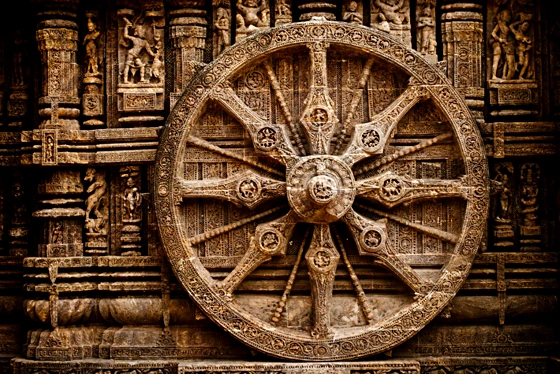
Sutra is pervasive
When most people hear the word ‘Buddhism’, what they are likely to bring to mind is the most pervasive kind of Buddhism, Sutrayana, the path of Sutra. The core tenets of Sutrayana are the Four Noble Truths and the Eightfold Path. Other doctrines, considered central by many are karma, the three marks of existence, the five precepts and the Prajnaparamita (‘wisdom perfection, transcendent wisdom’). Sutra is the dominant form of Buddhism available today.1 The majority of Buddhists in the world do not know about alternatives.
Sutric Buddhism influences many forms of meditation you are likely to come across, including secular mindfulness.
Sutra centers on the idea that complete liberation from suffering is possible. By doing the right things, being the right way, eventually, we can extricate ourselves from Samsara, a cycle of perpetually self-inducing misery. Secular mindfulness meditation mostly adopted this underlying framework. The language is the same, barring removal of the most prominent forms of magical thinking.
Is this realistic? The only way to eliminate suffering is to cease sensation. This was the original purpose of meditation practices intended to achieve no-self and liberation from Samsara. Cessation, the absence of sensory experience, is an important result in some of the best-known meditation systems. Cessation may have a somewhat different meaning from one system to another, but it usually refers to an experience involving at least a ceasing of the sensation of emotion. In traditional Theravada nirodha-samāpatti is the extinction of all feeling and perception. Adepts attaining this form of cessation lose consciousness and appear dead, sometimes for days. More usually, dissociative experiences, or short moments of unconsciousness followed by a state in which you no longer experience varied emotional responses to others or life circumstances, are both common effects in meditation systems deriving from Sutric traditions. Is this what you want?
Later developments in Buddhism, particularly in Tantra and Dzogchen, did not have the same goal. They place less emphasis on liberation from suffering, or cessation of sensation, and they include enjoyment and appreciation as aspects of the path. Dzogchen says that suffering and liberation are inseparable and it will not work to try to separate them. For these reasons some Buddhists regard Vajrayana as the corruption of an original pure form of Buddhism.
Christianity struggled with dotrinal challenges many times, for instance during the Protestant Reformation. Now Christians understand that Christianity includes multiple denominations, even if they reject some interpretations. More generally, most people understand that Christianity encompasses radically different, contrary views. By contrast, it is not yet well understood in the Buddhisphere that there are many distinct Buddhisms, some radically different and challenging to Sutric assumptions.
Whether or not you are a lumper or a splitter, history is messy, scripture is contradictory and so has been practice. The origins and developments of Buddhist Tantra are inextricably bound to its complex relationship with Sutra.2 Tantra encompasses a continuation of, a re-working of, and reaction to the ideas embodied in Sutric Buddhism, including dropping the goal of anatman, no-self.
Many contemporary presentations of Tantra are approached via Sutra, using the language of Sutra. This is not wrong — it is technically coherent to present Tantra from this perspective. Unfortunately though, Tantra’s distinct views and methods are often lost in the Sutric language and perspective. I don’t find that approach attractive because it occludes the most interesting, non-conformist origins and applications of Tantra. Maybe that is the point?
Meditation practice
The only way to escape suffering is to cease to experience. This was the ideal, it was the purpose of practice, in the cultural context in which Sutra developed. Much contemporary meditation instruction continues to incorporate this ideal. But some meditators don’t find want it interesting or appealing and don’t want to go there.
Even if this is not your goal, it is easy to fall into using the idealist, escapist language of Sutra to describe your meditation experience, because that is the default vocabulary that teachers, groups, apps, and traditions use. My post living contradictions is about this inconsistency.
Meditation can change your relationship with pain, dissatisfaction, and suffering, for the better without promising an end to it. If you think there is no world for human beings other than the one we live in, and that escaping emotion and sensation is inappropriate for your circumstances, a different approach may work well for you.
- 1.When I use the word ‘Sutra’, it is usually an abbreviation of ‘Sutrayana’.
- 2.The Origins of Yoga and Tantra, Samuel, Geoffrey, 2008 (Barnes & Noble) explores the intertwining early lineages of Tantric practice.
